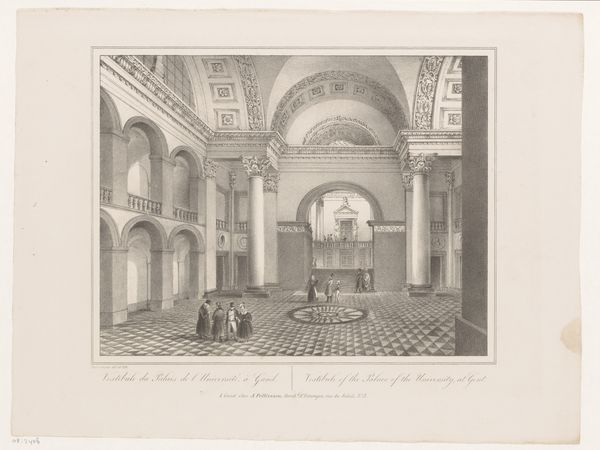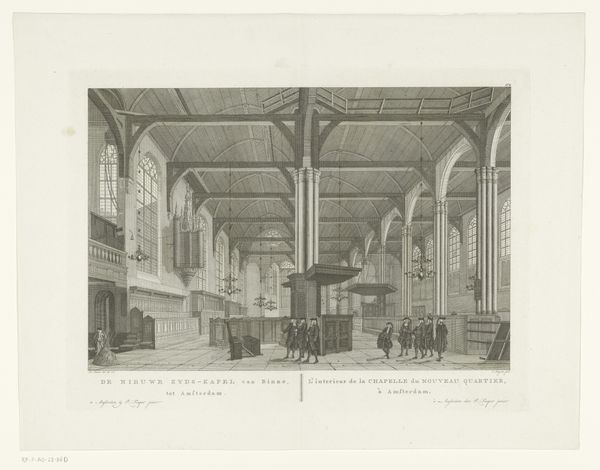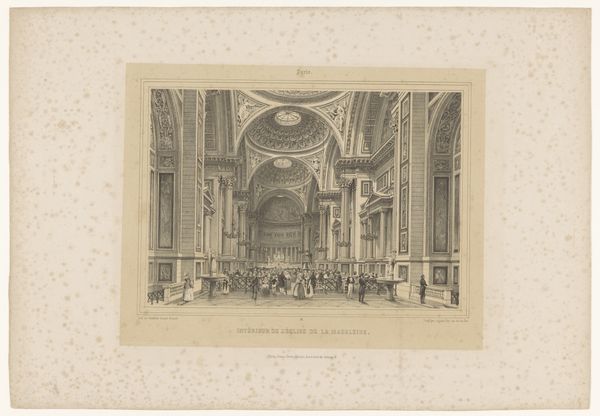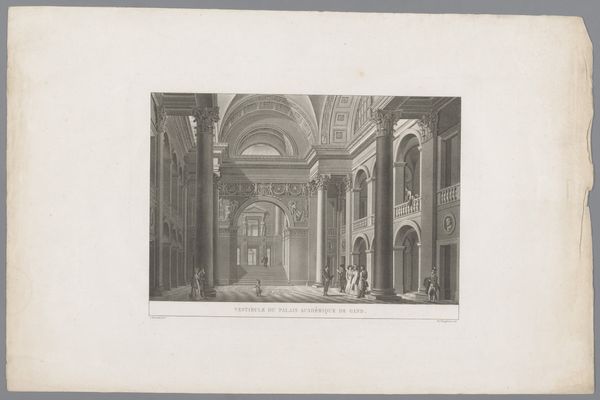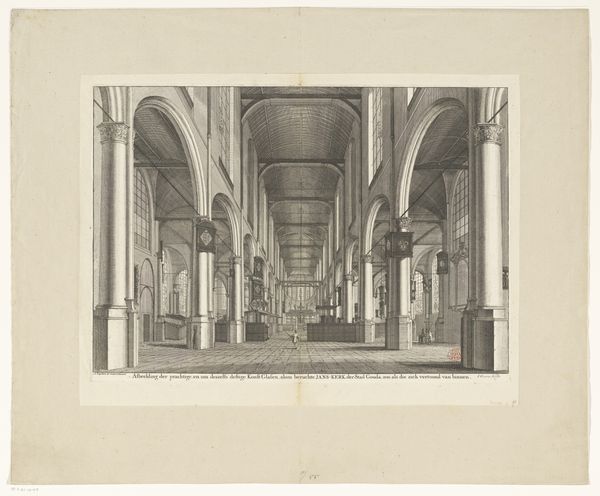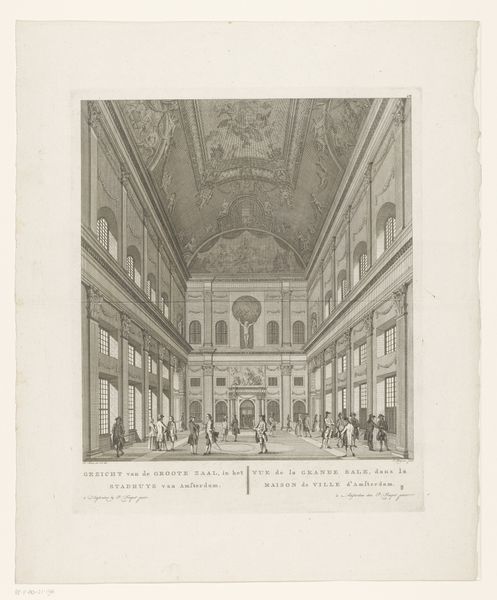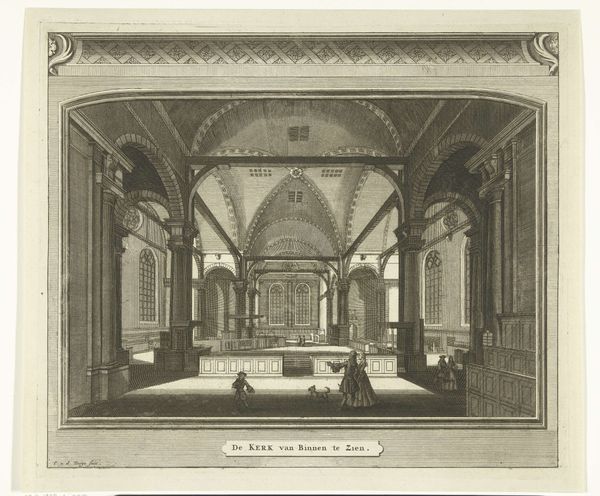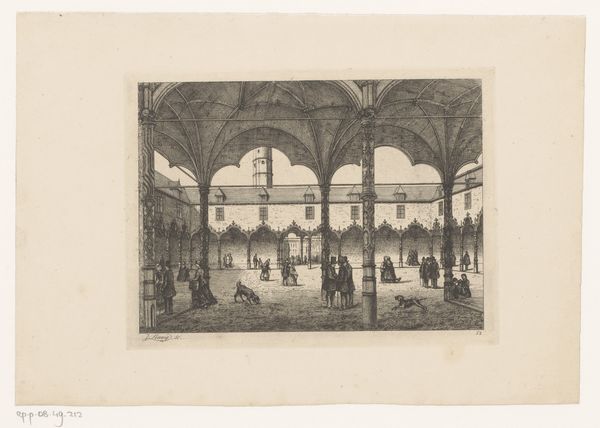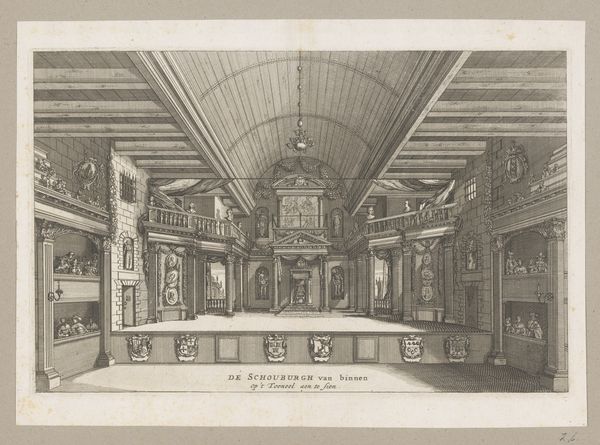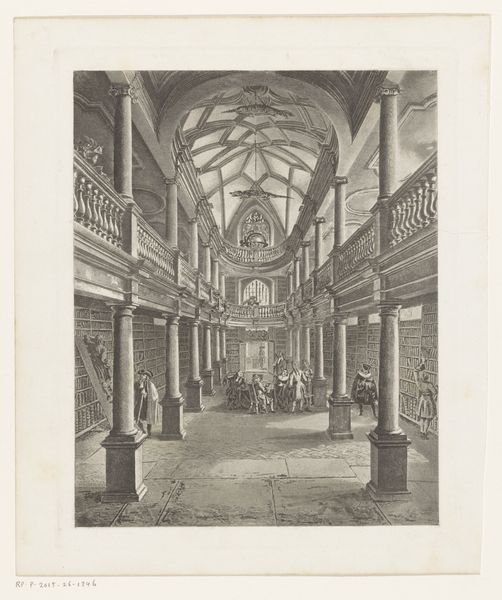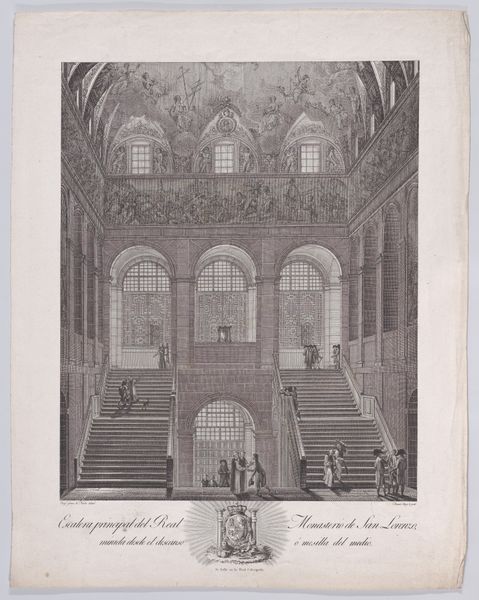
Dimensions: height 285 mm, width 372 mm
Copyright: Rijks Museum: Open Domain
Editor: Here we have Hermanus Petrus Schouten’s "Interior of the Oosterkerk in Amsterdam," likely created between 1770 and 1783. It’s a drawing, an engraving really, that gives you a striking sense of depth, almost like peering into a dollhouse. The figures are tiny but so precise. What catches your eye in this piece? Curator: That acute perspective, you're right, is the key, isn't it? It's as though we're invited into a quiet, almost theatrical space. Schouten captures not just the architectural details, mind you – the light, the vastness of the church—but also a particular moment, wouldn’t you agree? Observe the congregation. What do you make of their placement, their demeanor? Editor: They seem very orderly, almost arranged. It's less a bustling gathering and more of a posed tableau, a portrait of civic decorum, perhaps? Curator: Exactly. And that's where Schouten goes beyond mere representation. This isn't just a church; it’s a stage upon which social roles are carefully enacted. The light, hitting the columns, feels almost divine, no? It’s a delicate balance—capturing realism and injecting a touch of idealized harmony. A question for you: what story does this tell, in your eyes? What would the experience of being in this place have been? Editor: I see a world of order, of structure, of the community finding solace and meaning in shared ritual. Though, to be honest, the formality makes it seem a bit…distant. Curator: It's a glimpse into a world far removed, isn’t it? Thank you! It is amazing to have taken a fresh look together at this engraving and see a whole little world in one work! Editor: I learned so much looking closely at the staging within this image. This really does change how I think of historical art.
Comments
No comments
Be the first to comment and join the conversation on the ultimate creative platform.
